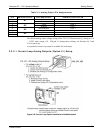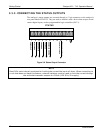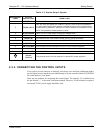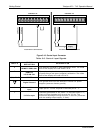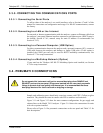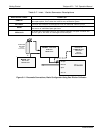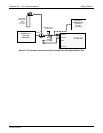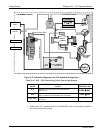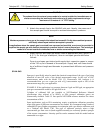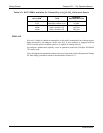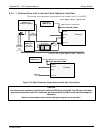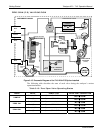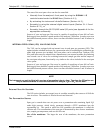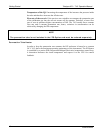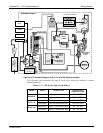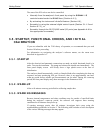
Teledyne API – T101 Operation Manual Getting Started
43
CAUTION
The exhaust from the external pump needs to be vented outside the immediate area or
shelter surrounding the instrument and conform to all safety requirements using a
maximum of 10 meters of 1/4” PTFE tubing.
2. Attach the sample line to the SAMPLE inlet port. Ideally, the pressure of
the sample gas should be equal to ambient atmospheric pressure.
NOTE
Maximum pressure of any gas at the sample inlet should not exceed 0.5 in-Hg above ambient pressure
and ideally should equal ambient atmospheric pressure.
In applications where the sample gas is received from a pressurized manifold, a vent must be provided to
equalize the sample gas with ambient atmospheric pressure before it enters the analyzer. The vented gas
needs to be routed outside the immediate area or shelter surrounding the instrument.
3. Attach zero air and span gas supply lines as appropriate (see Figures 3-6
& 3.7). For this type of analyzer, zero air and span gas are defined as
follows:
Zero air and span gas inlets should supply their respective gases in excess
of the 700 cc
3
/min demand of the analyzer. Supply and vent lines should
be of sufficient length and diameter to prevent back diffusion and pressure
effects.
SPAN GAS
Span gas is specifically mixed to match the chemical composition of the type of gas being
measured at near full scale of the desired measurement range. In the case of H
2
S,
measurements made with the Model T101 UV Fluorescence H
2
S Analyzer it is
recommended that you use a span gas with a H
2
S
concentration equal to 90% of the
measurement range for your application.
EXAMPLE: If the application is to measure between 0 ppb and 500 ppb, an appropriate
span gas concentration would be 450 ppb H
2
S in air.
Cylinders of calibrated H
2
S gas traceable to NIST-Standard Reference Material
specifications (also referred to as SRM’s or EPA protocol calibration gases) are
commercially available. Table 3-5 lists specific NIST-SRM reference numbers for various
concentrations of H
2
S.
Some applications, such as EPA monitoring, require a multipoint calibration procedure
where span gases of different concentrations are needed. We recommend using a bottle of
calibrated H
2
S gas of higher concentration in conjunction with a gas dilution calibrator such
as a Teledyne API Model T700. This type of calibrator precisely mixes a high
concentration gas from zero air (both supplied externally) to accurately produce span gas
of the correct concentration. Linearity profiles can be automated with this model and run
unattended over night.
07266B DCN6485



